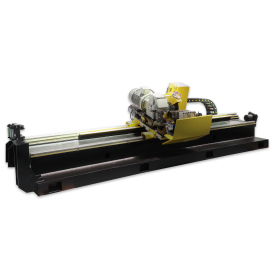[Impedor Circuit Element]Understanding Impedor Circuit Elements: Their Role and Applications in Modern Electronics and Electrical Engineering
News 2024-12-24
****In the world of electronics, the ability to manipulate electrical signals is paramount for the functioning of circuits. Among the various components that facilitate this manipulation, the impedor circuit element plays a crucial role. Despite its somewhat esoteric name, it is essential for understanding how circuits behave under different conditions and how they can be designed for optimal performance. This article will explore the concept of impedor circuit elements, their mathematical representation, physical characteristics, and their applications in contemporary electronic systems.
What is an Impedor Circuit Element?
An impedor circuit element is defined as a basic electrical component that impedes the flow of electric current and can influence the voltage and current characteristics in a circuit. The term "impedor" derives from the concept of impedance, which is a measure of how much an element resists the flow of electrical current when a voltage is applied. The impedance can vary with frequency, making these elements crucial for AC (alternating current) circuits.
Impedors can be divided into two primary categories: passive and active components. Passive impedor elements include resistors, inductors, and capacitors, which do not deliver energy to the circuit but instead store or dissipate energy. Active components, on the other hand, such as operational amplifiers and transistors, can provide gain and introduce energy into the circuit.
Mathematical Representation of Impedor Elements

Understanding Impedor Circuit Elements: Their Role and Applications in Modern Electronics and Electrical Engineering

Understanding Impedor Circuit Elements: Their Role and Applications in Modern Electronics and Electrical Engineering
1. **Resistors (R):** Resistors offer a linear relationship between voltage and current, as described by Ohm's Law (V = IR), where V is voltage, I is current, and R is resistance. The impedance of a resistor is purely real and does not change with frequency.
2. **Inductors (L):** Inductors store energy in a magnetic field and present an impedance that increases with frequency. The impedance of an inductor can be expressed as Z_L = jωL, where j is the imaginary unit and ω is the angular frequency (ω = 2πf, with f being frequency in hertz).
3. **Capacitors (C):** Capacitors store energy in an electric field and exhibit an impedance that decreases with frequency. The impedance of a capacitor can be written as Z_C = 1/jωC, which shows how it behaves oppositely to inductors with respect to frequency.
These mathematical representations enable engineers and designers to analyze the behavior of circuits and predict how they will respond under various conditions.
The Role of Impedor Circuit Elements in Electronic Design
The design of electronic circuits relies heavily on the functionality of impedor circuit elements. Understanding their characteristics allows engineers to create circuits that can perform specific tasks effectively. For example, in signal processing applications, resistors, capacitors, and inductors are often used in filters to manipulate frequency response, enabling clear transmission of signals while minimizing noise.
Impedor circuit elements also play a significant role in power delivery networks. Designers use these elements to manage the distribution of power across different components, ensuring stability and performance. In radio frequency (RF) applications, impedance matching becomes crucial to maximize power transfer and reduce signal reflections, which can compromise communication quality.
Moreover, the development of integrated circuits has further highlighted the importance of impedor elements. On-chip resistors and capacitors are employed in a myriad of applications, from analog signal conditioning to digital circuits, showcasing their versatility and ongoing relevance in modern electronics.

Understanding Impedor Circuit Elements: Their Role and Applications in Modern Electronics and Electrical Engineering
The understanding of impedor circuit elements is no longer a luxury; it is a necessity for anyone involved in electronics and electrical engineering. From basic circuit design to complex systems integration, the principles underlying these elements govern the behavior and performance of circuits in a wide array of applications. As technology continues to advance, the role of impedor elements will only become more integral, paving the way for innovative solutions in the field of electronics. Whether in consumer devices, industrial machinery, or telecommunications, these circuit elements are essential for creating reliable, efficient, and high-performance electronic systems.
